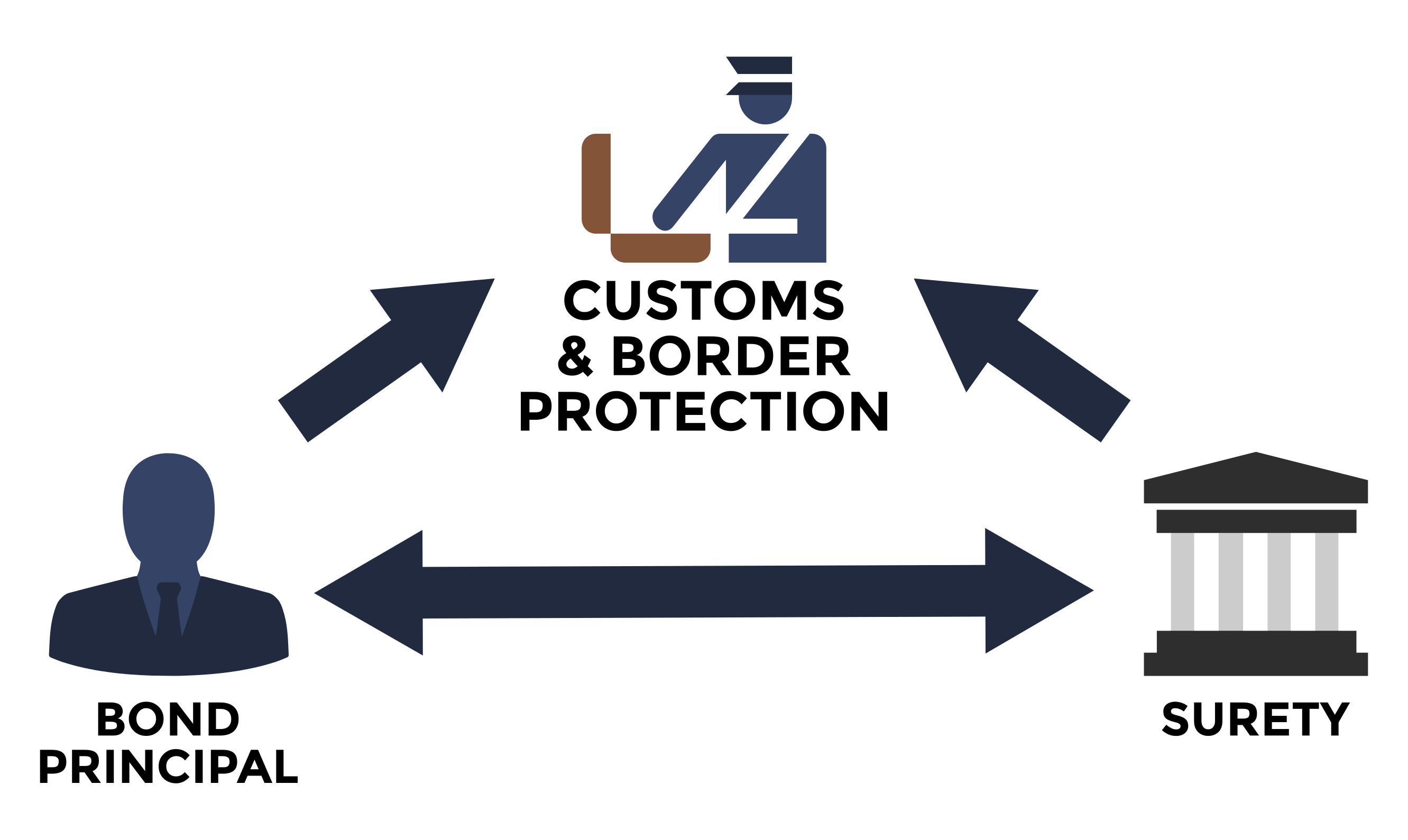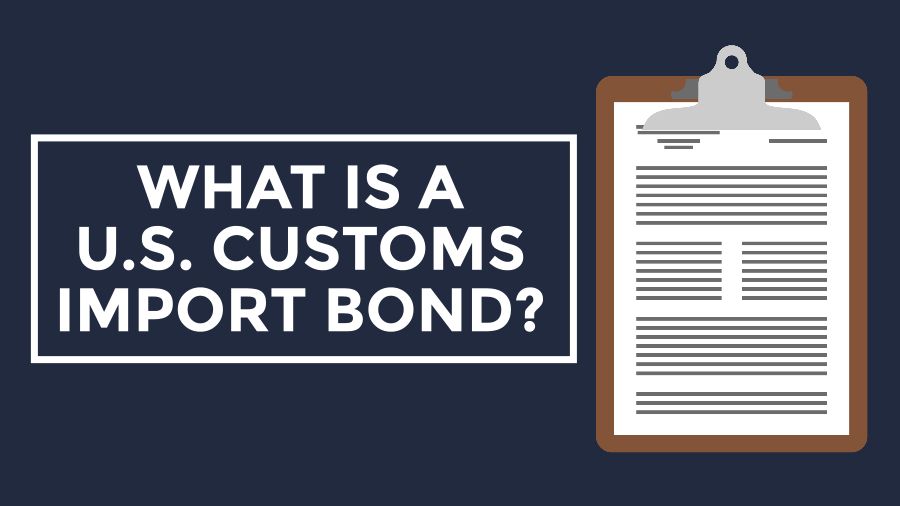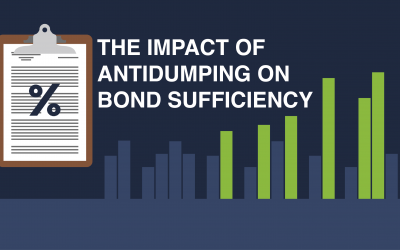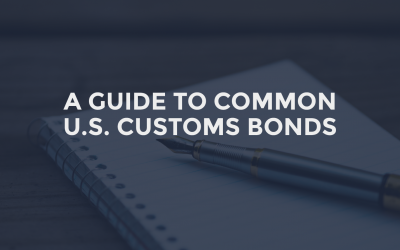Trade Risk Guaranty walks through the basics of a U.S. Customs Import Bond; what they are, who they cover, and how they work.
There are many parts of the importing process that can confuse and overwhelm a business that is new to international trade. However, a U.S. Customs Import Bond is one of the most overlooked and, often, the most misunderstood.
In order to clarify the basics on this topic, we have put together a brief educational video explaining U.S. Customs Bonds and answering the following questions:
- What is a Customs Bond?
- How Does a Customs Bond Work?
- How Much is a Customs Bond?
- Are Customs Bonds Refundable?
- Do I Need a Customs Bond?
- What Does a Customs Bond Do?
Before diving directly into the video, let’s start with a general understanding of Customs Bonds by covering the more important points.
What is a U.S. Customs Import Bond?
A U.S. Customs Bond is a three-party contract between a bond principal, a Treasury-listed surety, and U.S. Customs and Border Protection, also known as ‘CBP’. Having a bond on file is a mandatory requirement of the process of importing in the United States and goods will not be cleared at their port of entry without one.
- Bond Principal:
The bond principal is usually a person or company that imports goods into the United States and is also known as the Importer of Record. - U.S. Customs and Border Protection:
This is the government agency that controls, regulates, and facilitates the movement of goods into and out of the United States. - Treasury-listed Surety:
A U.S. Customs bond is a type of Surety bond so it must be written by an insurance company. Here at TRG, we are an insurance agency that works directly with the insurance company to provide these bonds directly to the importer.

How Does a U.S. Customs Import Bond Work?
Although it is a type of surety bond, a Customs bond does not function like a typical insurance product. A Customs bond does not protect the bond principle nor does it protect the goods they import. Instead, it protects the government’s revenue stream.
A Customs bond is a financial guarantee that CBP will be paid any and all duties, taxes, and fees determined to be due during the process of importing. If the principle on the bond is unable or unwilling to pay these duties, taxes, and fees, the bond ensures that the surety that wrote the bond will pay up to the bond amount to CBP on behalf of the principle.
However, in the case of a Surety payout, the importer is not absolved of their obligation. In fact, the importer is still liable for the damages to the Surety as well as any remaining obligation to Customs.
How Much is a Customs Bond?
TRG works directly with our insurance providers in order to offer our clients the lowest price, meaning your $50,000 Customs bond could be as little as $225 per year. Customs brokers and freight forwarders charge an additional markup, usually bringing the total price of the bond up to $400-500 without including duties, taxes, and fees.
However, if you’re importing more than $500,000 in goods into the United States, pricing will go up. For example, if you’re importing goods equal to or less than $500,000, you’ll need a $50,000 surety bond, which is the lowest allowable by U.S. Customs. That doesn’t mean you’ll pay $50,000 to Customs – it means you’ll need to pay the price of the bond provided by a company like TRG.
Are Customs Bonds Refundable?
At Trade Rish Guaranty, we offer pricing on a U.S. Customs Bond in 1-, 2-, 3-, and 5-year billing cycles. And because we know that for most businesses the only constant is change, TRG offers a refund policy on unused premium for each unused annual bond period. Whether you need to increase your bond, change importer numbers, or cancel your policy for any reason, TRG will pro-rate your refund based on the number of annual bond periods you didn’t use.
Do I Need a Customs Bond?
A U.S. Customs Import Bond is known by a variety of names, including ‘Importer Bond’, ‘Customs Bond’, ‘C1 Bond’, and an ‘Activity Code 1 Bond’. Despite its many names, they are all talking about the same piece of the importing process.
- A U.S. Customs Bond is a three-party contract between a bond principal, a treasury-listed surety, and U.S. Customs and Border Protection, also known as ‘CBP’.
- In the case of a U.S. Customs bond, the bond principle is usually a person or company that imports goods into the United States. Having a bond on file is a mandatory requirement of the importing process and goods will not be cleared at their port of entry without one.
- U.S. Customs and Border Protection is the government agency that controls, regulates, and facilitates the movement of goods into and out of the United States.
- A U.S. Customs bond is a type of Surety bond so it must be written by an insurance company. Firms like TRG are insurance agencies that work with the insurance company to provide these bonds directly to the importer.
- Watch the following video to learn the basics of U.S. Customs Import Bonds and if your business needs one.
Did you like that video? Check out the next video in the series on the Difference Between Single and Continuous Customs Bonds.
Note: this post was originally published in 2018 and has been updated to include new statistics and information.






![[Video] What Are Antidumping and Countervailing Duties?](https://traderiskguaranty.com/trgpeak/wp-content/uploads/2024/03/what-are-antidumping-countervailing-duties-YT-400x250.png)
